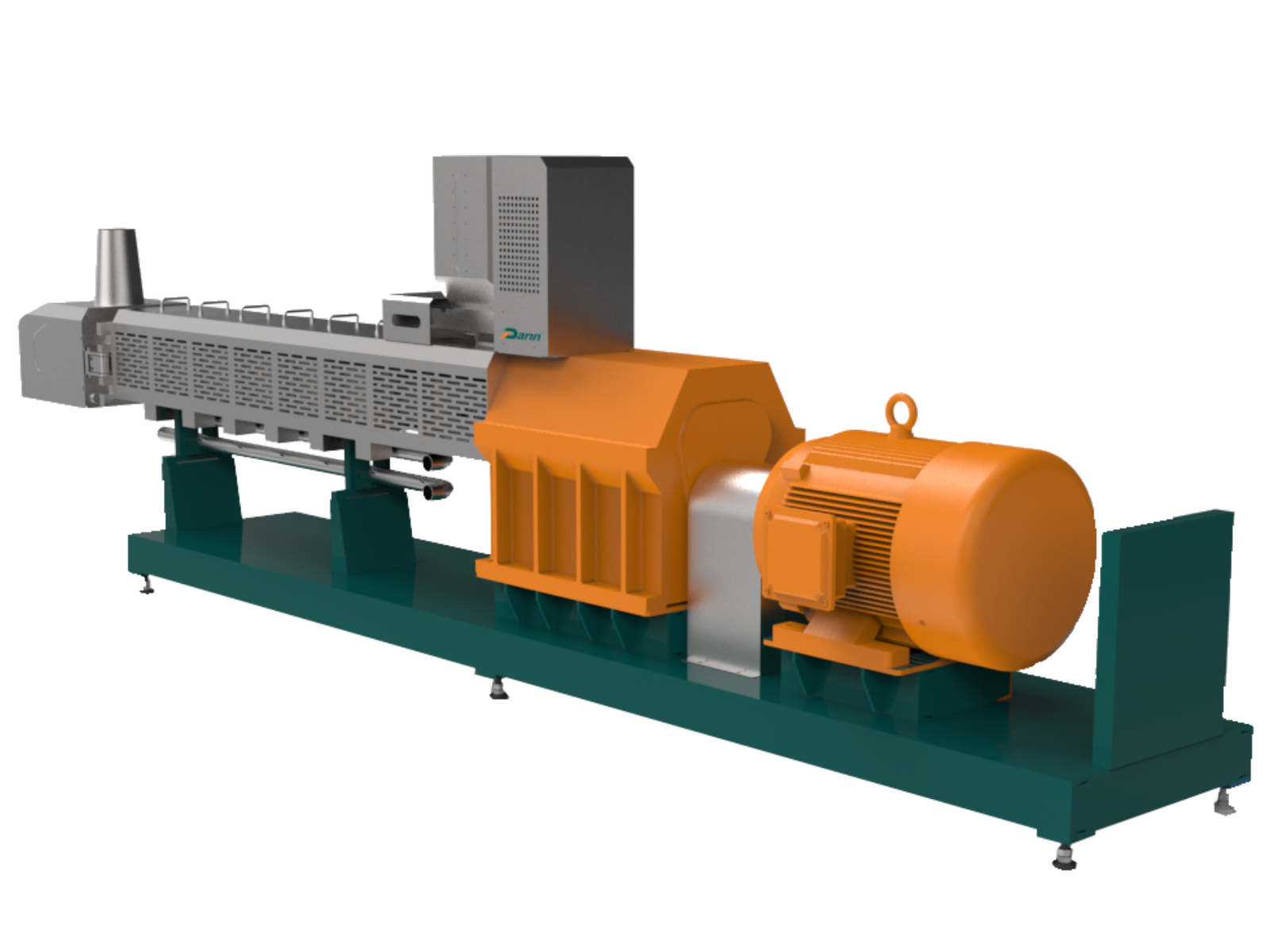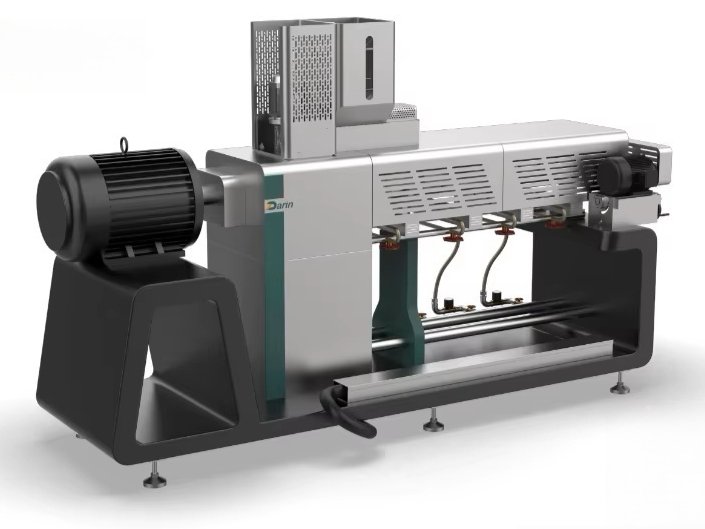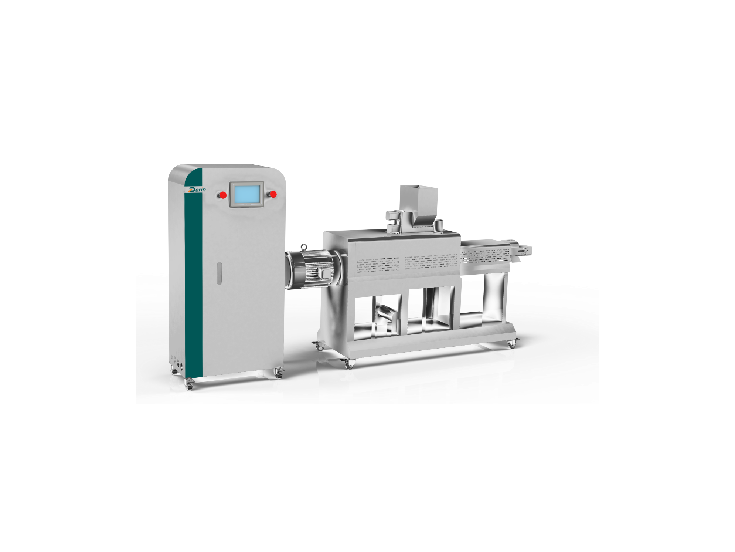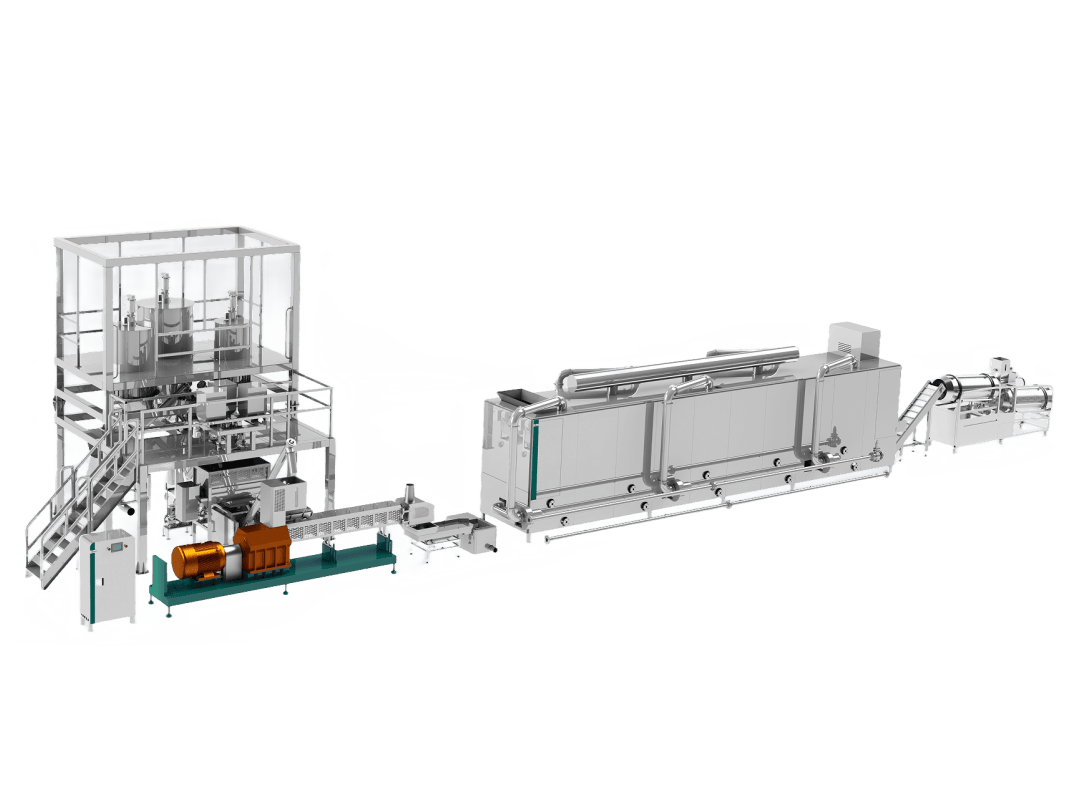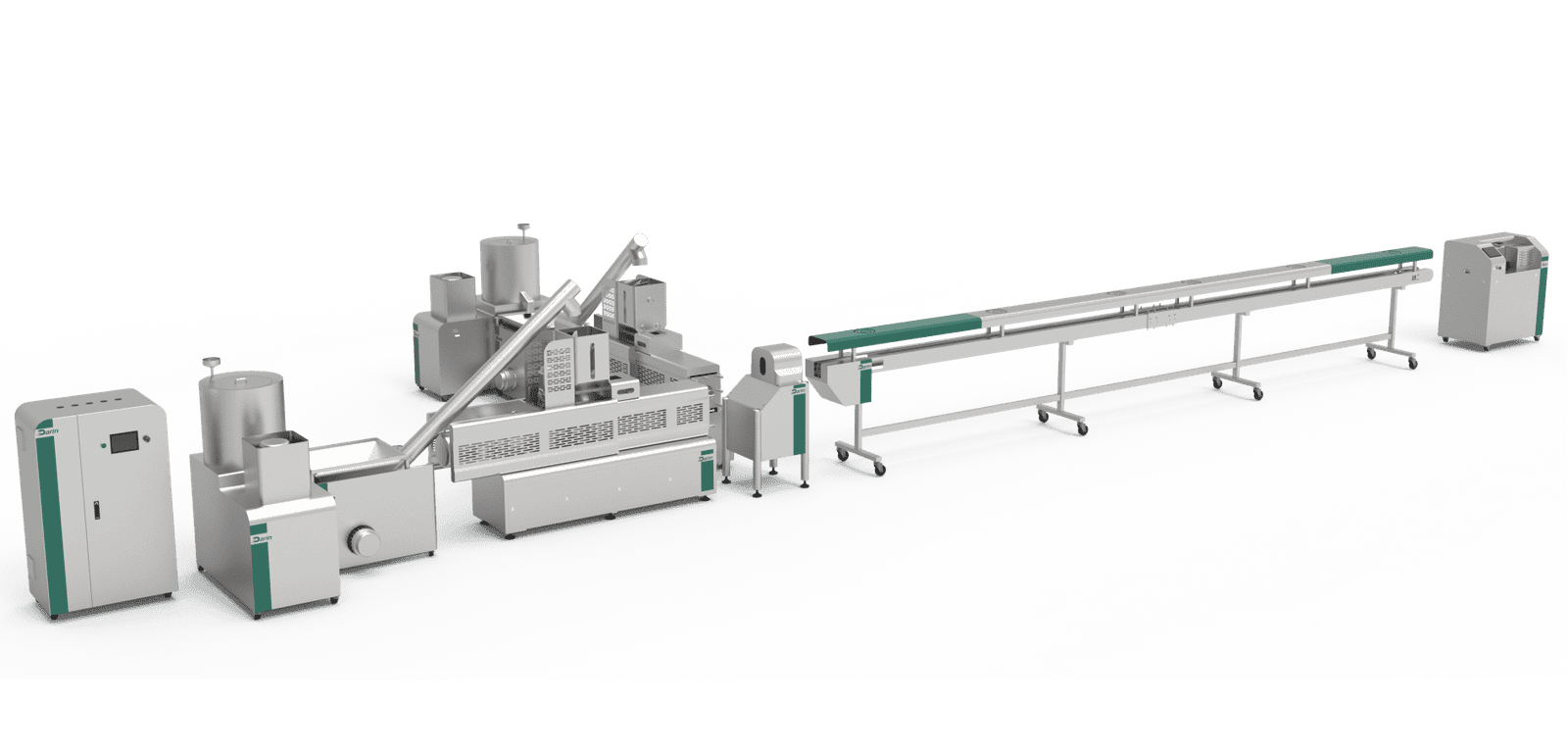
Choosing the right pellet machine for your fish feed production can feel overwhelming.
The primary difference between wet and dry type pellet machines lies in their processing methods. Wet type machines require a steam boiler to provide moisture, making them suitable for large-scale operations. In contrast, dry type machines do not need additional moisture, making them more cost-effective for smaller-scale productions.
Understanding these differences can significantly impact your production efficiency and feed quality. I remember when I first ventured into this field, grappling with the nuances of each machine type. It felt like navigating a maze. But once I grasped how each operates, it was like a light bulb went off, illuminating the best path forward for my specific needs. Whether you're managing a massive operation or just starting out, choosing the right machine can make all the difference. Let's delve deeper into how each type of pellet machine operates and which might be the optimal choice for your specific needs.
Wet type machines require a steam boiler.True
Wet type machines need steam for moisture, suitable for large-scale use.
Dry type machines are more costly than wet type.False
Dry type machines are cost-effective, ideal for small-scale productions.
How Does a Wet Type Pellet Machine Operate?
Ever wondered how those tiny fish feed pellets are made? It's quite the fascinating journey!
A wet type pellet machine operates by mixing raw materials with water or steam, then using heat and mechanical pressure to form pellets. This process enhances digestibility and nutrient retention, crucial for producing quality fish feed.
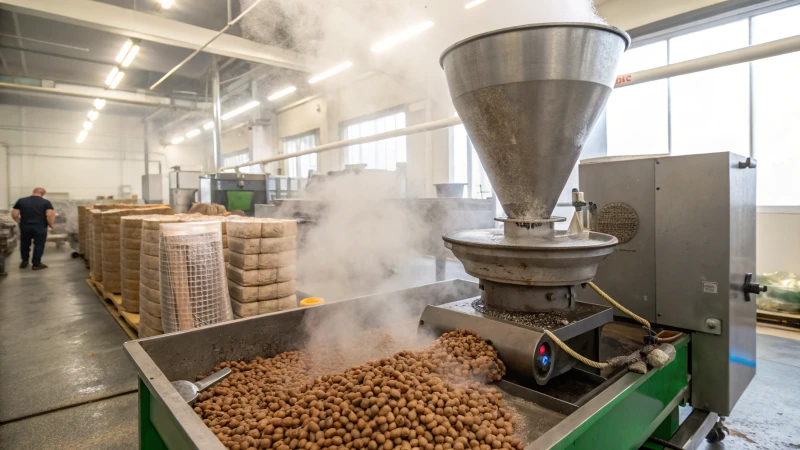
Understanding the Basic Components
Imagine standing in front of this impressive machine, a complex mix of engineering that somehow turns raw materials into perfectly shaped fish feed pellets. At its heart are the conditioner1, extruder, and cutter. The conditioner is like the chef in a kitchen, preparing the ingredients by mixing them with steam or water, making them just right for what's next. Then comes the extruder, the powerhouse that applies heat and pressure, shaping each piece into a perfect pellet. Finally, the cutter sizes them, ensuring every pellet meets the exact needs of our aquatic friends.
| Component | Function |
|---|---|
| Conditioner | Mixes ingredients with moisture |
| Extruder | Shapes pellets using heat and pressure |
| Cutter | Sizes pellets according to specifications |
The Conditioning Process
I remember the first time I saw conditioning in action. It was like witnessing a mini climate change, where steam softened the ingredients, making them more digestible for fish. This part of the process isn't just about mixing; it's about transforming those raw materials into something more—something nourishing and easy to digest. This step influences nutrient retention2 and final texture.
Extrusion Techniques
The extrusion process is where things get really exciting. Picture a giant screw pushing that softened mix through a die. The temperature and pressure3 are meticulously controlled to affect density and buoyancy—imagine crafting feed that can float or sink, depending on what your aquatic creatures need. This step is all about precision.
Cutting and Cooling
After extrusion, cutting ensures each pellet is just the right size. I’ve seen how crucial cooling is here—it solidifies the structure, ensuring the pellets don't crumble under pressure during storage or transport. Watching this process feels like witnessing a blacksmith forging something sturdy and reliable.
A cooling unit typically follows this stage to lower pellet temperature before packaging.
Operational Considerations
Every machine has its quirks, and optimizing these settings can feel like fine-tuning a musical instrument. You have to adjust moisture content, screw speed, and temperature to match the specific feed type and ingredients you’re working with. Regular maintenance is key, much like keeping a classic car running smoothly.
Advantages in Feed Production
When I think about why these machines are so valued, it’s clear they offer real advantages: better nutrient retention and stronger pellet durability. These benefits make them suitable for high-quality fish feed production4, meeting industry standards for aquaculture nutrition.
Understanding these intricate processes not only helps maximize efficiency but also contributes to successful aquaculture ventures—a true testament to the magic of modern machinery.
Conditioner adds moisture for extrusion.True
The conditioner mixes raw materials with steam or water, aiding extrusion.
Extruder shapes pellets without heat.False
The extruder uses heat and pressure to shape the feed into pellets.
What Are the Key Advantages of Dry Type Pellet Machines?
Ever wondered how dry type pellet machines are transforming the way we create pet food? Dive into their incredible advantages with me.
Dry type pellet machines offer several benefits including energy efficiency, ease of maintenance, and flexibility in producing various pellet sizes. They eliminate the need for additional drying equipment, making them cost-effective and space-saving options.

Energy Efficiency and Cost Savings
Imagine a machine that not only makes your production process smoother but also cuts down on your energy bills. That's what dry type pellet machines bring to the table. I remember when I first switched from a wet type machine—suddenly, there was no need to spend extra on drying equipment. Everything was integrated! This efficiency doesn't just make things easier; it translates into real savings that add up significantly over time.
One of the standout features of dry type pellet machines is their energy efficiency5. Unlike wet type machines, which require additional drying processes, dry type machines integrate the drying phase into the extrusion process itself. This eliminates the need for separate drying equipment, thus saving on both energy and operational costs.
Ease of Maintenance
If you're like me, you probably dread the downtime that comes with maintaining complex machinery. Dry type pellet machines are designed to be user-friendly, with fewer moving parts that mean less wear and tear. It's such a relief to know that maintenance won't be a constant headache, allowing me to focus more on innovating new product lines rather than troubleshooting.
Dry type pellet machines are designed with simplicity in mind, making them relatively easy to maintain. Most models feature fewer moving parts and a straightforward operational mechanism, which reduces wear and tear. By investing in user-friendly machinery6, companies can focus more on production rather than frequent repairs.
Flexibility in Production
These machines are like a dream come true for anyone in the pet food industry. They allow me to experiment with different pellet sizes and shapes effortlessly. Whether I'm working on a new line of dental chews or trying out a niche market snack, the flexibility these machines offer is indispensable.
These machines are known for their flexibility in producing a wide range of pellet sizes and shapes. Customizable settings enable precise control over pellet density and texture, ensuring consistency across batches. Businesses can easily switch between products, enhancing their market competitiveness7.
Space-Saving Design
When space is at a premium, every square foot counts. Without the need for additional drying units, dry type pellet machines help maximize available space. This was a game-changer for my smaller production facility, allowing us to increase capacity without compromising our workflow.
A significant advantage of dry type pellet machines is their compact design. Without the need for additional drying equipment, these machines occupy less space in production facilities.
| Feature | Benefit |
|---|---|
| Energy Efficiency | Lower operational costs |
| Maintenance Ease | Reduced downtime |
| Production Flexibility | Wide range of products |
| Compact Design | Optimal use of space |
Exploring these advantages really makes you appreciate why dry type pellet machines are such a hit in the industry. They don't just produce high-quality pellets; they do so while keeping costs down, making them an invaluable part of any production line.
Dry type pellet machines require separate drying equipment.False
Dry type machines integrate drying into the extrusion process, eliminating the need for separate drying equipment.
Dry type pellet machines have fewer moving parts.True
They are designed with simplicity, reducing wear and tear and lowering maintenance costs.
Which Pellet Machine Is More Energy Efficient?
Finding the perfect pellet machine can transform your energy usage, slashing costs and boosting efficiency. But which one should you choose?
The most energy-efficient pellet machine typically uses advanced technologies like variable frequency drives (VFD) and high-efficiency motors. These features reduce energy consumption by optimizing power usage during operation, making them more sustainable and cost-effective.

Understanding Pellet Machine Efficiency
I remember the first time I saw a pellet machine in action; it was like watching a symphony of mechanics. These machines take raw materials and transform them into pellets through sheer mechanical prowess. The energy efficiency of these machines isn't just about the tech specs—it's a dance of motor types, compression methods, and clever energy recovery systems.
Machines equipped with variable frequency drives8 are like the conductors of an orchestra, tweaking motor speeds to meet the demands of their workload with precision.
| Feature | Impact on Efficiency |
|---|---|
| High-Efficiency Motors | Reduce energy loss during operation |
| Variable Frequency | Match power usage to operational need |
| Energy Recovery Systems | Recycle waste energy into the process |
Types of Pellet Machines
In my journey through the world of pellet machines, I've come across different types, each with its own rhythm and beat when it comes to energy efficiency:
- Flat Die Pellet Machines: These remind me of a trusty old pickup truck—reliable for small-scale production but not always the sleekest in terms of energy use. They're simple and affordable but might not win any awards for efficiency.
- Ring Die Pellet Machines: Imagine a high-performance sports car; these are built for large-scale production. They might have a steeper price tag initially, but they offer lower operating costs thanks to their energy-saving prowess.
- Biomass Pellet Machines: Specifically tuned for biomass materials, these are the eco-friendly warriors, often kitted out with heat recovery systems9 to minimize energy waste.
Factors Influencing Energy Efficiency
Several factors influence the energy efficiency of a pellet machine, each one like a piece of a complex puzzle. I’ve learned that even the quality of raw materials10 plays a starring role—higher moisture content means more power is needed for drying.
Keeping your machine well-maintained is like keeping your car in tune; regular cleaning and part replacement can prevent energy wastage due to wear and tear.
- Material Quality: Ensures consistent processing and reduces additional energy required for adjustments.
- Regular Maintenance: Prevents inefficiencies caused by wear and tear or clogging.
- Advanced Controls: Systems that allow precise control over processing parameters can greatly enhance efficiency.
Understanding these nuances can help you choose the most energy-efficient pellet machine for your needs. Delving into options that leverage modern technology can lead to significant savings in both energy costs and environmental impact. Every step we take towards efficiency is a step towards a more sustainable future.
Ring die machines have lower operating costs.True
Ring die machines are more efficient, reducing energy costs over time.
Flat die machines are the most energy-efficient option.False
Flat die machines offer moderate efficiency and are less energy-efficient.
How Do Feed Quality and Nutrient Retention Compare?
Have you ever wondered how the quality of what we feed our pets and livestock affects their health and growth?
Feed quality and nutrient retention are interrelated, affecting the nutritional value delivered to animals. High-quality feed is more likely to retain essential nutrients during storage and processing, ensuring better health outcomes for livestock.

The Importance of Feed Quality
I remember the first time I realized just how crucial feed quality is. It was when I watched my neighbor's farm thrive after switching to high-quality feed. Suddenly, the animals looked healthier and more vibrant, almost like they knew they were being well-cared for. The secret? A balanced mix of proteins, carbohydrates, vitamins, and minerals—all packed into premium feed. These nutrients don't just support growth but play a vital role in reproduction and immune functions too.
Factors Affecting Feed Quality
- Ingredient Selection: Picking the best raw materials is like choosing the freshest ingredients for a family meal—essential for nutrient-rich feed.
- Processing Methods: Think of it like cooking; proper techniques preserve the integrity of the nutrients, much like grinding and pelleting can.
- Storage Conditions: It's like storing your grandma's homemade pickles—keep it dry and cool to prevent any loss of goodness over time.
Understanding Nutrient Retention
Nutrient retention—this one's a bit like making sure your favorite leftovers taste just as good the next day. It's all about how well those precious nutrients are kept intact from when the feed is produced until it's consumed by our furry or feathered friends.
Key Influences on Nutrient Retention
| Factor | Impact on Nutrient Retention |
|---|---|
| Heat Treatment | Excessive heat can lead to vitamin losses but enhances digestibility. |
| Moisture Levels | High moisture can promote spoilage, reducing nutrient availability. |
| Feed Additives | Certain additives can enhance nutrient stability and absorption. |
Comparing Feed Quality and Nutrient Retention
While it's true that high feed quality often leads to better nutrient retention, it's not always a done deal. I learned this the hard way when a batch of top-notch feed didn't yield the expected results due to poor storage conditions. Factors like processing conditions11 and storage can still impact retention rates, regardless of initial quality. That's why evaluating both aspects is key for optimal feeding strategies.
Role of Technological Advancements
The world of technology never ceases to amaze me. Innovations in feed processing technology have taken things to new heights. For instance, advanced extrusion techniques12 have been shown to significantly improve nutrient stability while maintaining those all-important quality standards. Embracing these technological advancements is like upgrading from dial-up internet to fiber optic—it just makes everything better. This understanding allows us to make informed decisions in feed production and management, leading to improved outcomes in modern animal husbandry practices.
High-quality feed always ensures better nutrient retention.False
While high-quality feed aids retention, factors like storage affect it.
Excessive heat during processing can cause vitamin losses.True
Excessive heat can degrade vitamins, impacting nutrient retention.
How do different types of costs affect your business?
Ever wondered how different costs shape your business strategy?
Cost implications vary across fixed, variable, and indirect costs. Fixed costs remain constant regardless of output, while variable costs fluctuate with production levels. Indirect costs, like overheads, affect pricing strategies and overall profitability.

Fixed Costs
I remember when I first set up my business, the predictability of fixed costs like rent and salaries was comforting. Just like clockwork, these expenses rolled in every month, allowing me to plan my budget with confidence. But, of course, the flip side is that they need to be paid even when the revenue dips. That's the challenge every entrepreneur faces—ensuring there's always enough in the coffers to cover these expenses.
| Fixed Costs | Example |
|---|---|
| Rent | Office or factory space |
| Salaries | Full-time employee pay |
Variable Costs
In contrast, variable costs remind me of a rollercoaster ride. I learned early on that as production levels went up, so did my expenses for raw materials and labor. It was exhilarating yet daunting to manage these as they ebbed and flowed with demand. Thankfully, the flexibility they offer means I can scale my operations based on market needs—a vital aspect of my strategy.
Learn more about managing variable costs13
Indirect Costs
Ah, the hidden gremlins of the business world—indirect costs. They're not as apparent as fixed or variable costs but crucial nonetheless. Things like utilities and marketing expenses can sneak up if you're not careful. Early on, I learned that these costs can significantly impact pricing strategies and overall profitability if not managed well.
| Indirect Costs | Example |
|---|---|
| Utilities | Electricity, water |
| Marketing | Advertising campaigns |
Analyzing Cost Implications
Understanding how these different cost types interact has been like having a secret weapon in my business arsenal. I've seen firsthand how cutting down on fixed costs through automation can lead to substantial long-term savings, even if it requires an upfront investment. Diving into cost analysis is a game-changer; it opens up pathways to smarter financial decisions and greater operational efficiency.
Exploring the benefits14 of cost analysis can lead to smarter financial decisions and greater efficiency.
Every strategy I implement aims to balance these costs effectively, thereby boosting my competitive edge and ensuring sustainability in the long run.
Fixed costs remain constant regardless of production levels.True
Fixed costs do not change with production or sales levels, such as rent.
Variable costs are unaffected by changes in production volume.False
Variable costs fluctuate directly with the level of production.
How Do You Choose the Right Pellet Machine for Your Needs?
Choosing the right pellet machine feels like navigating a maze of options, but with a little guidance, you can find the perfect match for your needs.
To choose the right pellet machine, assess your specific material needs, production capacity, and technological requirements. Compare features and certifications to ensure compliance with industry standards.
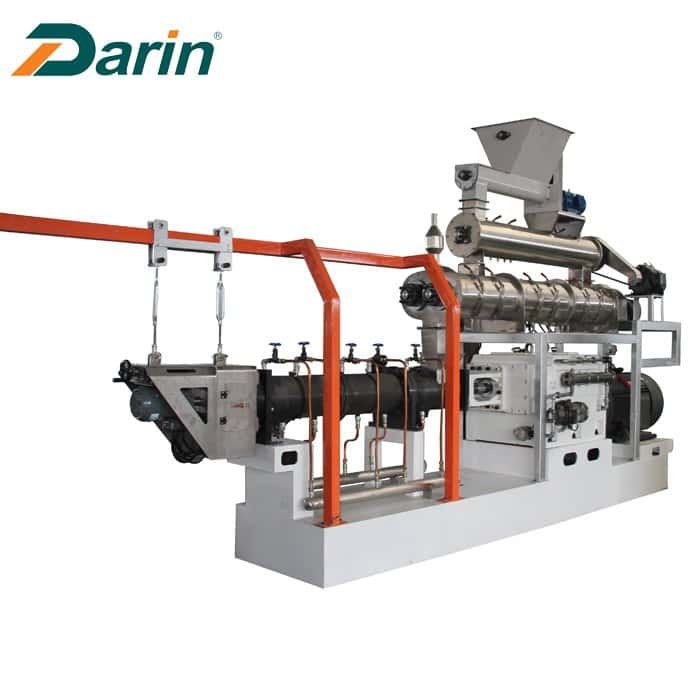
Assessing Your Material Needs
When I first ventured into selecting a pellet machine, it felt like diving into a world of endless possibilities. The key was understanding the type of material I'd be working with. Imagine crafting pet food15 – it's not just about mixing ingredients; it's about handling both dry and wet materials with precision. And if you're in the wood industry, like a friend of mine who crafts beautiful furniture, you'd need machines that can handle high-density materials without breaking a sweat.
Evaluating Production Capacity
I remember standing in awe at a friend's pet food production facility, watching as their machines churned out hundreds of kilos per hour. It's critical to determine your output needs upfront. Whether you're a hobbyist or running an industrial-scale operation, understanding your capacity requirements ensures you don't end up with equipment that's either too small or unnecessarily large.
| Machine Type | Suitable For | Capacity Range |
|---|---|---|
| Small Scale | Hobbyists | 50-100 kg/h |
| Medium Scale | Small Businesses | 200-500 kg/h |
| Large Scale | Industrial Use | 1-5 tons/h |
Considering Technological Features
Nowadays, I can't imagine a machine without digital controls and energy-saving features. It's like driving a car with all the latest tech – safer, more efficient, and downright easier to handle. Prioritizing machines with certifications16 like CE and ISO is not just about compliance; it's about peace of mind, knowing you're investing in quality.
Comparing Costs and Warranties
Ah, the age-old debate: cost versus value. I once bought a machine that was a bargain upfront but cost me a fortune in repairs later. It's crucial to weigh the initial investment against long-term benefits, like energy savings and maintenance costs. A comprehensive warranty is your safety net, and companies that offer robust global support are like finding a partner who has your back no matter where you are.
By carefully evaluating these aspects, you can confidently select a pellet machine that fits your unique operational needs and goals. It's about making a choice that feels just right for you.
Small scale machines produce 1-5 tons per hour.False
Small scale machines typically produce 50-100 kg/h, not 1-5 tons/h.
Conclusion
Wet and dry pellet machines differ in processing methods, impacting production efficiency and feed quality. Wet machines use steam for moisture; dry machines are cost-effective and energy-efficient.
Explore how conditioners work to enhance pellet quality by adding moisture and improving texture. ↩
Learn why nutrient retention is vital for producing effective fish feed. ↩
Understand how extrusion conditions impact pellet density and buoyancy. ↩
Discover why wet type pellet machines are preferred for high-quality aquaculture feed production. ↩
Learn how dry type pellet machines can reduce energy consumption, leading to cost savings. ↩
Discover the ease of maintaining these machines and how it reduces operational downtime. ↩
Explore how these machines offer versatility in production, allowing for varied product outputs. ↩
Learn how variable frequency drives optimize energy use by adjusting motor speed according to demand. ↩
Discover how these systems reduce energy consumption by reusing waste heat. ↩
Understand the impact of material quality on energy use and processing efficiency. ↩
Understanding processing impacts can aid in optimizing methods to preserve nutrients. ↩
Exploring advanced techniques reveals how modern methods improve feed quality and nutrient retention. ↩
This link provides strategies for controlling variable costs, offering practical tips for businesses to enhance cost-efficiency. ↩
Explore how cost analysis can lead to improved financial decisions and operational efficiency. ↩
Explore this link to understand different types of pellet machines suitable for pet food processing. ↩
Learn why CE and ISO certifications are crucial for machinery compliance and quality assurance. ↩


